
What is VTO and how is it changing the future of e-commerce?
What is Virtual Try-On (VTO)?
What comes to your mind when thinking about virtual reality (VR)? Maybe games? Headsets? Those are undoubtedly popular uses for VR, but we are sure you have already heard about virtual try-on and how it’s changing the way we buy clothes and wearables.
Virtual try-on is a technology that lets consumers see how certain products look on them before they buy the item without actually touching it or ever having to step into the dressing room. Watches, shoes, apparel, accessories, jewelry, and make-up, the sky’s the limit when it comes to virtual try-on.
How does virtual try-on work?
Virtual try-on for apparel usually blends computer vision, artificial intelligence, algorithms, and augmented reality (AR) to provide an immersive user experience. It may seem a lot but virtual try-on apps are very user-friendly and the whole process takes just a few seconds. A device with a camera (phone, iPad, etc) captures the consumer and detects more than 99 points on the human body, which allows the virtual try-on app to monitor the body position in real time. This assures that the 3D product stays in place even when the user moves their head or any other part of their body.
In general, virtual try-on can be experienced in three formats:
In-store virtual fitting rooms. With AR and AI technology, you can virtually overlay items in real time so you can check the size, style, and fit of the product. This technology can be found in the form of smart mirrors (smart displays), which use AI and gesture recognition to impose clothing or wearables on the customer’s image.
Mobile virtual try-on. With the help of AR visualizer apps such as Wanna, Threedium, and Aryel, you can virtually try on clothes, cosmetics, accessories, shoes, or furniture pieces in your space using your smartphone.
Desktop virtual try-on plugins. While online shopping, you will only need to turn on your webcam or upload a photo of yourself to see how the product fits you.
As you can see, the scenario may change but these formats are essentially the same thing; virtual techniques of dressing that provide a fun and immersive experience. At the end of the day, each brand will decide which solution suits them the best according to their customers’ needs.
Why is virtual try-on better than in-person?
There are several reasons why virtual try-on apps are the next big thing. Let’s go through some of them from the consumer and business perspective.
Benefits for customers
It is not possible to be sure about how something looks unless it is tried on. For customers, having the chance to try the desired product provides the opportunity to actually experience it. Knowing how a product suits them removes one of the main negative features of online shopping and makes purchasing decisions much easier.
This will make the overall user experience better and more personal. And, at the same time, creates loyalty as customers are more likely to shop from the same brand again.
Benefits for businesses
There is no doubt that one of the main benefits of virtual try-on is it creates a great customer experience. But have you ever thought that virtual testing can also be a valuable source of information? You can track which products are selling the best, measure them, and arrange offers in various locations to meet the customers’ real needs.
Brands should seek to proactively solve questions and confusion about the products that may come up during online shopping. With virtual try-on technology, customers can imagine themselves in a range of styles and sizes before purchasing, which can help reduce the enormous costs incurred by the return of goods.
Best virtual try-on examples
Here are some of the many brands that are killing it with their virtual try-on solutions:
Wanna
Wanna is a startup that launched its own sneaker try-on app, where people can discover fresh drops and classic sneakers with the help of augmented reality. Users can try on sneakers instantly on their feet regardless of where they are and then snap a photo.
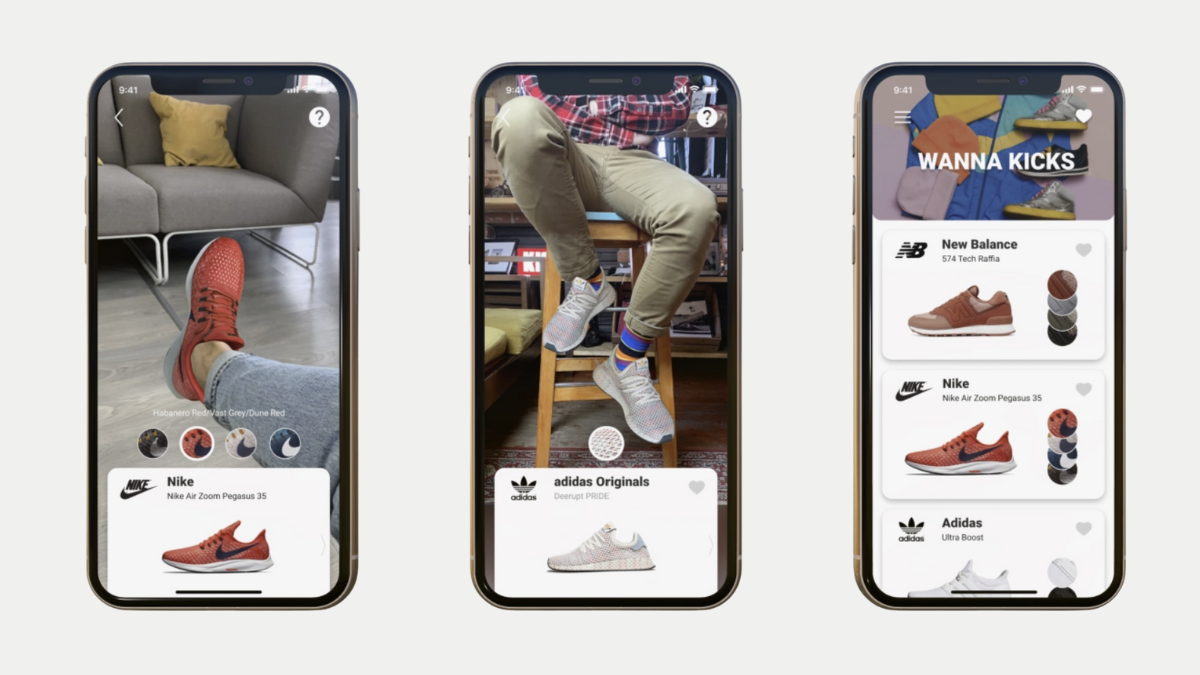
Farfetch
In 2020, the online luxury fashion retail platform launched a feature on its app that allowed shoppers to try on sneakers and watches through AR before buying them.
Now, the company has partnered with Snapchat to introduce an apparel try-on tool. For example, a user simply stands in front of their camera and says, “show me a windbreaker jacket with a pattern”. The software will search and choose the ideal products from the brand catalog, and display the jacket on the user’s body allowing them to see how they fit and take screenshots to share with their friends.

Prada
Prada is also testing Snapchat’s virtual try-on tool. The Italian luxury fashion brand uses hand gestures technology to allow shoppers virtually try on various different bags. The users will only need to move away their phones, make a hand gesture, and signal to the camera every time they want to try on a different handbag.
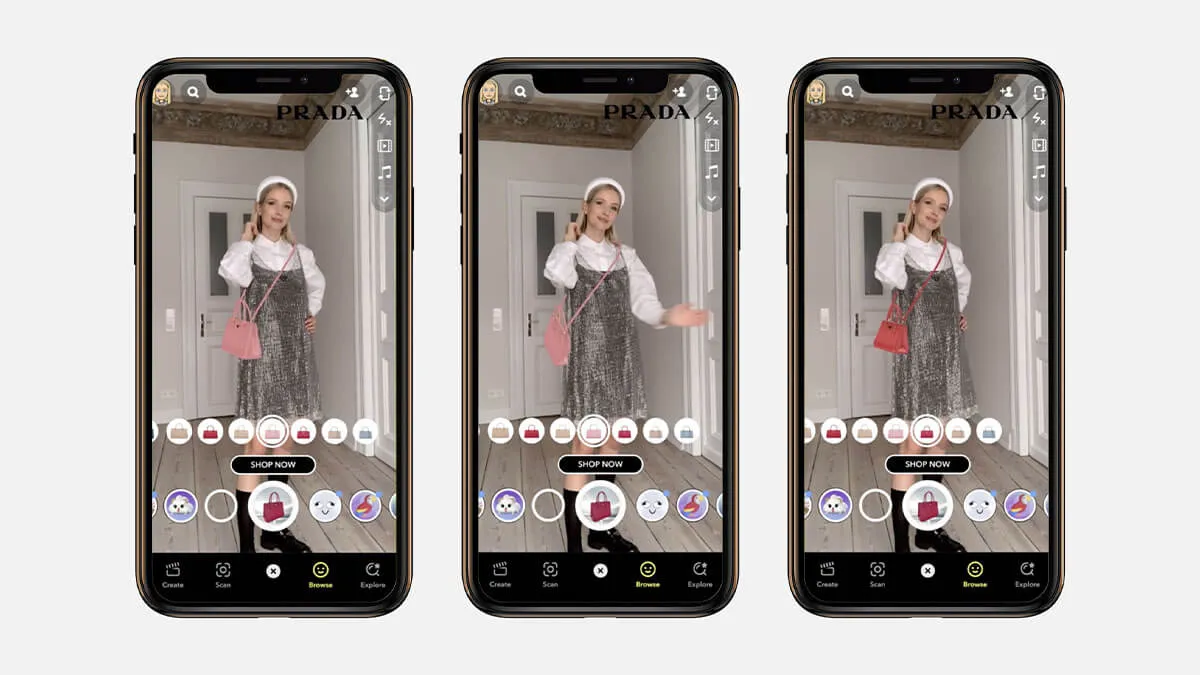
L’Oreal
In this case, it was a social media platform the one partnering with a retailer and an AR company, ModiFace, to offer virtual try on options on Instagram Shopping.
Some of the many Loreal brands that are using the tool are NYX, Urban Decay, Lancome and Maybelline. And it really is a perfect move to target shoppers in social media channels, especially on Instagram, where users search for beauty content and inspiration on what to buy.
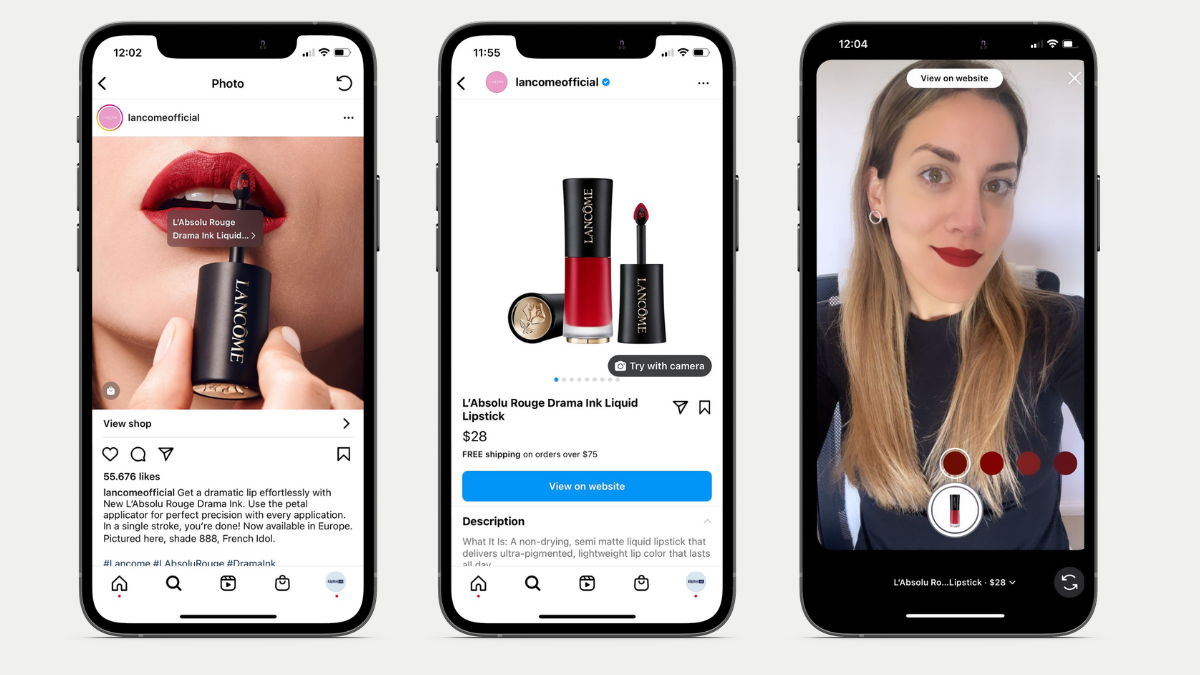
Ikea
Ikea was one of the first brands that introduced augmented reality into the furniture industry changing the way we shop for our homes.
Users can now preview how the desired piece of furniture will look in a room by simply pointing the camera at the space they want to fill.
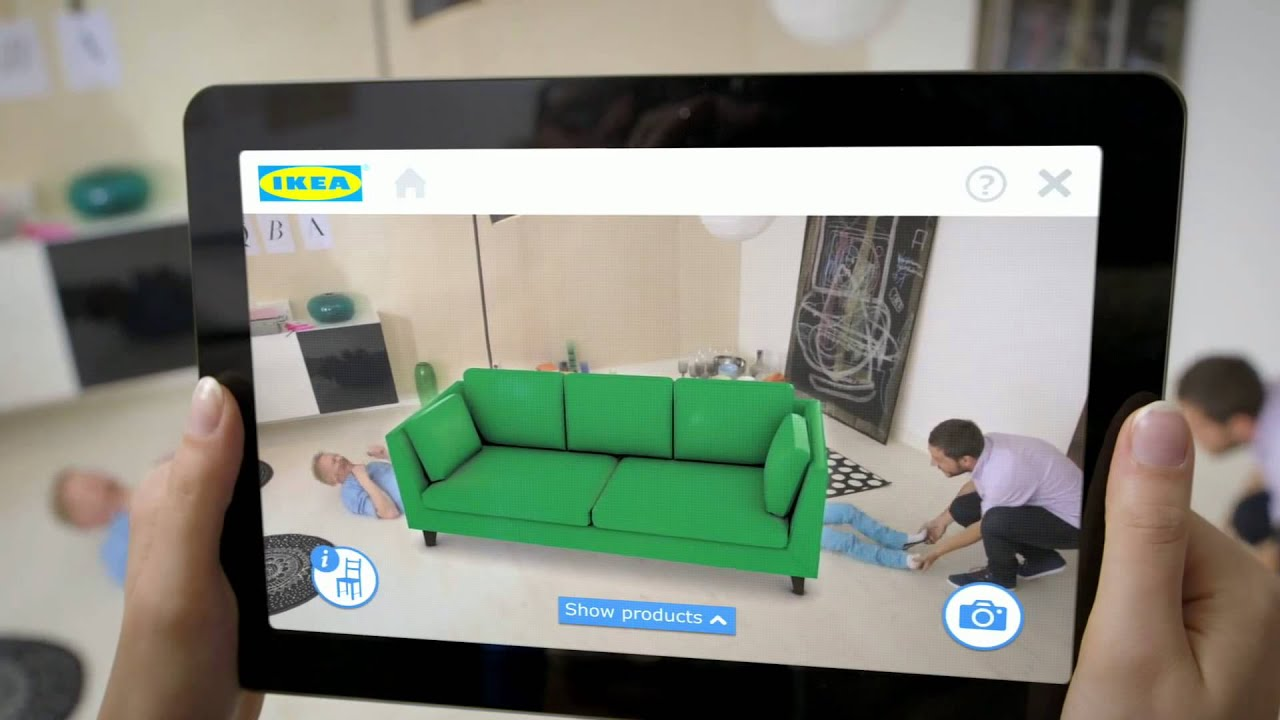
Aryel
Aryel is a SaaS marketing platform that helps brands and creative agencies to easily launch engaging WebAR marketing campaigns via drag and drop, publish them through a simple custom-URL, measure goals and conversions, and connect the campaign with the most used marketing tools. It is an all-in-one platform, no coding or apps are needed.
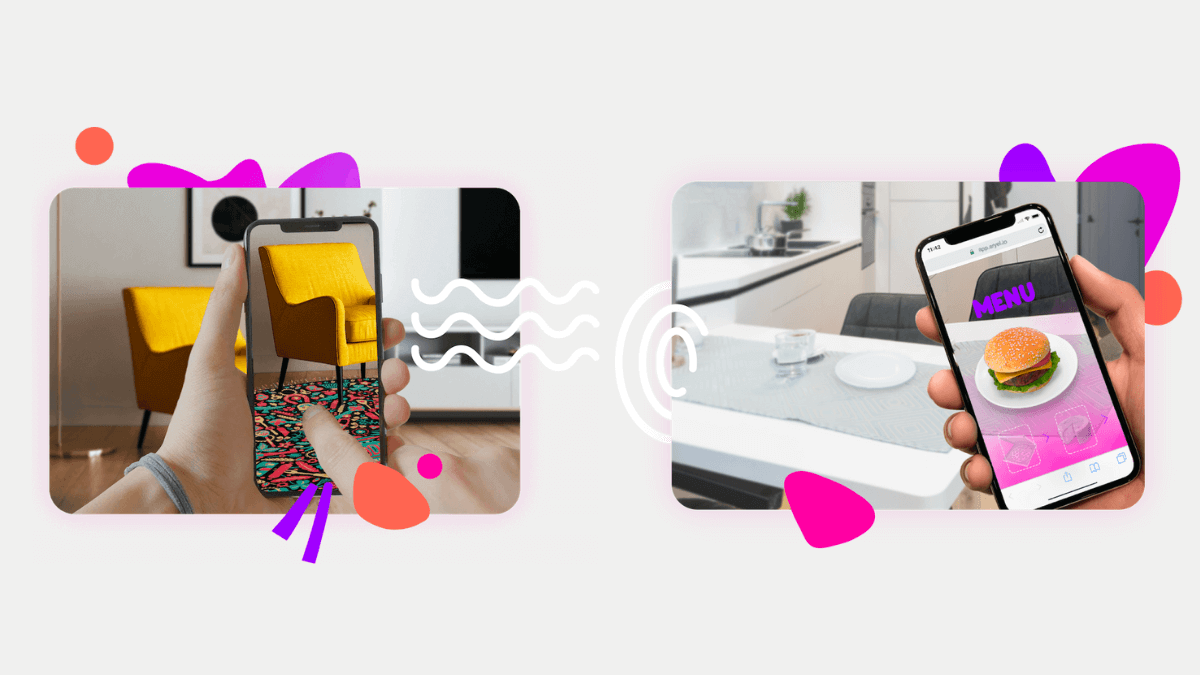
Why should brands add VTO to their future plans/strategy?
More than 61% of online buyers prefer to buy from brands that offer AR and VR. And it does not come as a surprise since this technology lets consumers have the freedom to try and choose products at their own pace, without feeling the pressure to make a purchase.
Boosts Sales
When somebody gets to see what a watch or a jacket will look like in real life and in real time, it’s not only impressive but also pretty persuasive.
Engaging and immersive experiences
Stands out from competitors. Instead of sticking to 2D images, VTO allows e-commerces to make more interactive content.
Increases brand awareness and engagement
While using virtual try-on technology, not only you can interact with the product, but you can also use it on social media to share the image, ask for style advice and engage with other followers.
Instead of just checking static images, with VTO, online shopping can become an experience that customers want to spend more time enjoying.
Better customer satisfaction
Being able to see how a specific piece of furniture would look in a real-life space through a mobile device means consumers have fewer doubts, as a result, retailers can see a decrease in the total number of product returns.
And where to start? Where to get the content?
For businesses to embrace virtual try-on, the first step is creating 3D models of their products. And here is where things can get tough because there’s no easy way of producing 3D content. For example, making a simple furniture object can take a whole team a week and thousands of dollars. Costs can get really high if you are an online store with a big catalog.
Luckily, at Alpha3D, we are building a platform to simplify and automate the creation of 3D digital assets from real physical objects with AI software in order to make Augmented Reality and virtual try on available for everyone.
With Alpha’s solution, businesses will be able to simply upload images of their products and receive a digital asset in a glb format, compatible with any metaverse, AR, and VR environment. As simple as that.
How does Alpha AR work?
One of the main goals brands have is to help create future immersive experiences that drive impact, visits, and revenue.
If your company is considering setting up a virtual-try-on feature for your consumers, take into account that this technology should be personalized for each brand, present products as realistically as possible and be easy to use. At Alpha, we offer a fully customized approach aligned with your business goals and expectations.





